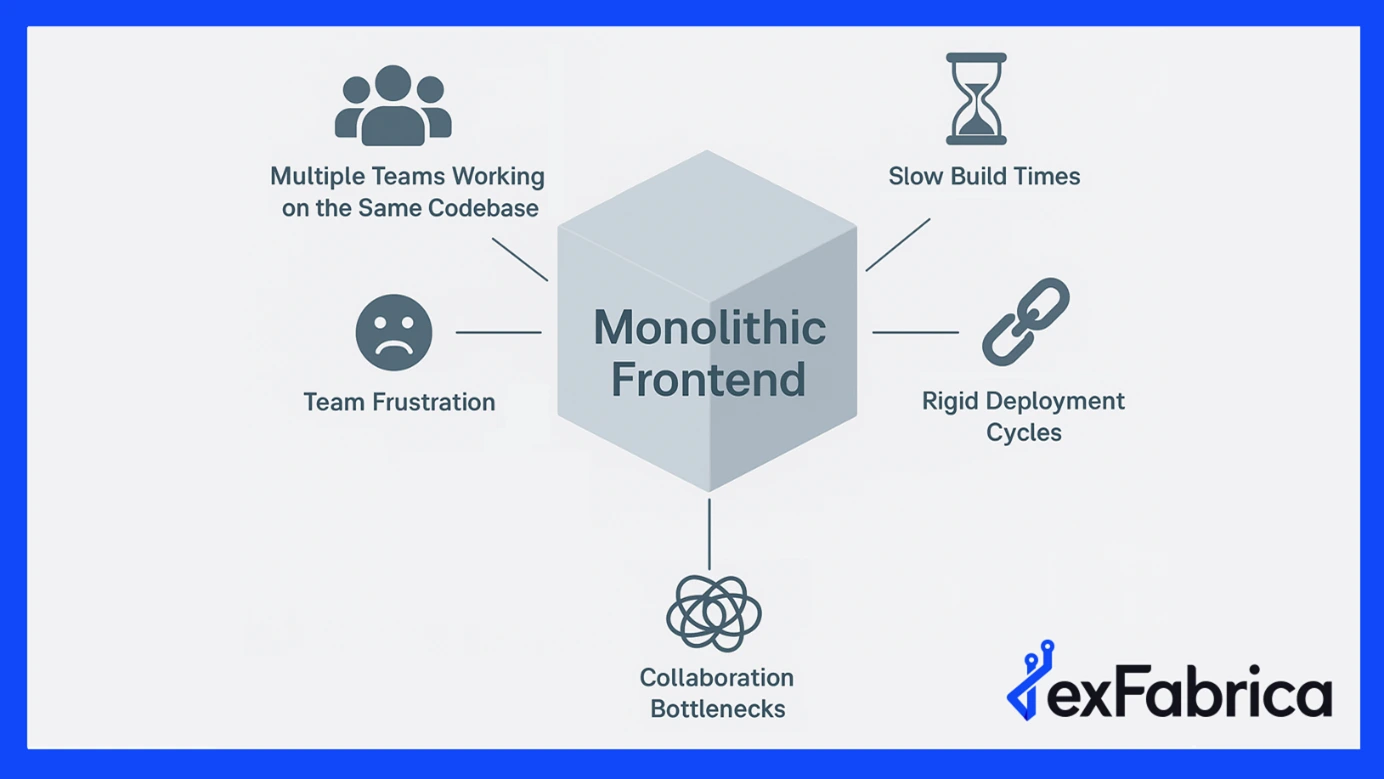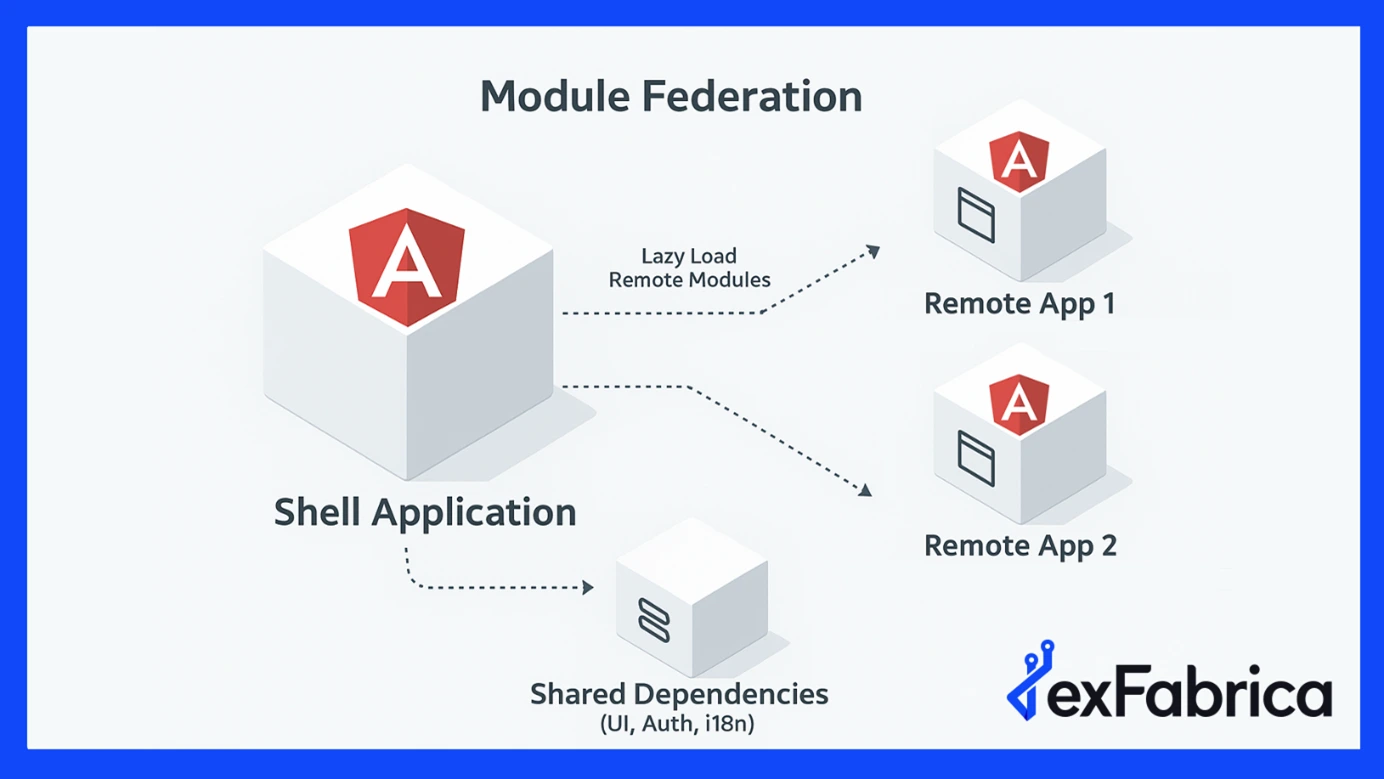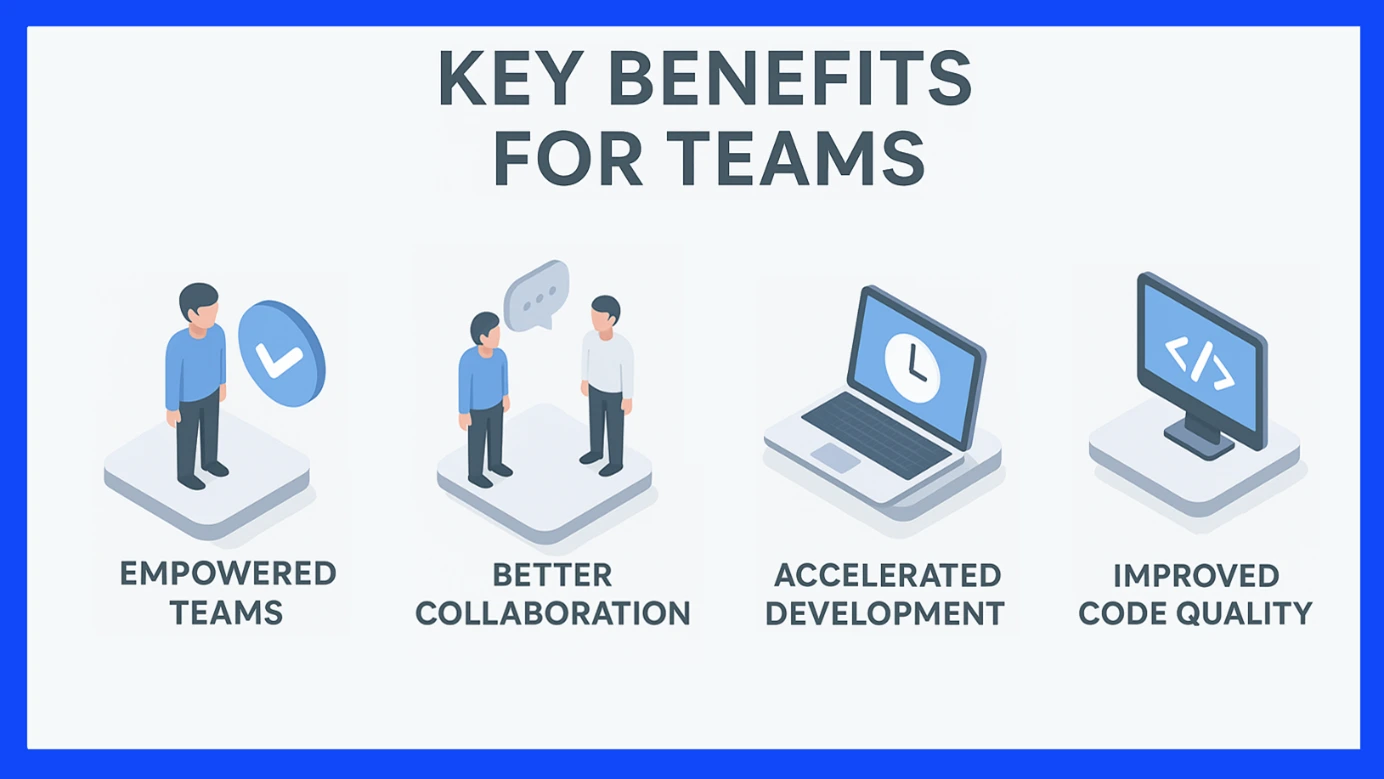 Julien Lefebvre - Oct 18, 2025
Julien Lefebvre - Oct 18, 2025Why can the Angular Native Federation architecture change your frontend and team performance forever?
Breaking silos for more agile teams !
Frontend development today faces a major challenge: endless build times, rigid deployment cycles, and bottlenecks in collaboration. Traditional monolithic architectures struggle to evolve, leading to technical debt, inefficiency, and growing frustration.What if each team could develop, test, and deploy its features autonomously, while relying on common tools and standards to ensure overall consistency? This is what Native Federation with Angular offers, combining the modular architecture of Module Federation and the speed of esbuild. This approach revolutionizes not only technical performance, but also team dynamics.
Angular Native Federation and esbuild: A winning combination
1. Module Federation: The end of Frontend monoliths
Module Federation allows you to split a frontend application into independent modules, developed, deployed, and updated without impacting others. With Angular Native Federation, this approach is optimized for Angular applications, offering seamless integration with the ecosystem.
2. A common foundation for more autonomy
To ensure overall consistency, a shared design system and a team dedicated to cross-functional features (such as authentication or internationalization) are put in place. These elements are not constraints, but levers:- The design system provides a library of UI components (buttons, forms, etc.) and design rules (colors, typography) to ensure a unified user experience.
- Cross-functional services (authentication, I18n, etc.) are managed centrally, but evolve in collaboration with functional teams.
3. esbuild: Speed at the service of teams
esbuild, an ultra-fast bundler, reduces build times from several minutes to just a few seconds. For teams, this means:- Less waiting, more time to code and innovate.
- Faster iterations, with instant feedback.

Key benefits for your teams
1. Autonomous and empowered teams
With Angular Native Federation, each team owns its modules:- Independent development: No need to wait for other teams to deliver a feature.
- Local technical decisions: Each team chooses its tools and practices, while respecting common standards.
- Increased responsibility: Teams are responsible for the quality and performance of their modules.
2. The role of shared tools
The design system and cross-functional services simplify development:- Teams use ready-to-use UI components, without having to recreate them.
- Cross-functional features (like authentication) are already integrated and tested, reducing risks.
Result: More agile, motivated, and productive teams.
3. Accelerated development cycles
- Fast builds with esbuild: No more time wasted waiting.
- Independent deployments: A team can deploy an update without blocking others.
- Faster testing and validation: Isolated modules simplify testing.
4. Evolution of shared tools
Updates to the design system or cross-functional services are integrated gradually by teams, without disruption.Impact: More frequent and reliable releases.
5. Better collaboration and fewer conflicts
- Parallel work without blockages: Several teams can work on different modules.
- Simplified continuous integration: Modules are integrated dynamically.
- Clear communication: Interfaces between modules are clearly defined.
- Collaboration around shared tools
- Teams contribute to improvements in the design system and cross-functional services.
- Feedback is shared and integrated to evolve the tools.
Benefit: Smoother collaboration and fewer coordination meetings.
6. Improved code quality and maintainability
- Feature isolation: Each module is autonomous.
- Reduced technical debt: Teams modernize their modules without breaking everything.
- Better observability: Errors are localized in a specific module.
- Contribution of shared tools
- The design system and cross-functional services standardize best practices (accessibility, performance).
- Regular audits ensure compliance and reduce vulnerabilities.
Advantage: Cleaner, more maintainable, and more scalable code.
7. A more innovative technical culture
- Easier experimentation: Teams test new technologies in an isolated module.
- Continuous learning: Each team becomes an expert in its field.
- Collective innovation
- Teams propose improvements for the design system and cross-functional services.
- Workshops and feedback sessions enrich shared tools.
Effect: A more dynamic and creative technical culture.

Testimonials and feedback
1. Use Case: A large SAAS company
A SAAS company suffered from 15+ minute builds and long release cycles. After adopting Angular Native Federation:- Builds dropped below 2 minutes.
- Teams deploy their modules independently.
- The design system and cross-functional services reduced visual and technical inconsistencies.
Result: Productivity tripled and better user satisfaction.
2. Use Case: E-Commerce Platform
An e-commerce player used Native Federation to:Impact:
- A 20% increase in conversion rates.
- Fewer bugs in production.
How to prepare your teams for this transition?
- Train and Support: Organize workshops to explain the use of the design system and cross-functional services, and encourage teams to contribute to improvements of these tools.
- Start Small: Identify a pilot module and integrate shared tools (e.g.: UI components, authentication).
- Adapt DevOps Processes and automate CI/CD pipelines to support independent deployments.
- Encourage Collaboration and create spaces for sharing feedback on shared tools.
Conclusion: A new era for your Frontend teams
Angular Native Federation, combined with a well-designed design system and cross-functional services, offers:- More autonomy for teams, without sacrificing consistency.
- Accelerated development cycles.
- Smoother collaboration.
- More maintainable code and a unified user experience.
And you, what are the main obstacles to your frontend teams’ productivity today?
